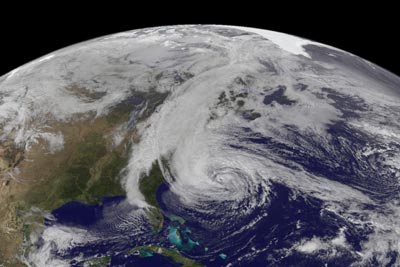If you close your eyes and breathe in summer, you can imagine a burger with a number of toppings to include swipes of barbecue brushed with a brisk stroking of the hand alongside basil sprinkled baked beans on a toasted bun ridged by a smoky grill outback in the yard or on your stove. The dramatics of summer is not, however, just the thought of food and its experience, but thoughts swell to take in weather predictions of a surge of hurricanes for 2013. NOAA- National Oceanic and Atmospheric Administration- a federal agency that warns of dangerous weather, is predicting 2013 as a hurricane season that is “extremely” active. Already, there are 13-20 named storms with 7 to 11 already predicted to become hurricanes and 3-6 more than likely will become major storms with wins of 111mph or more.
Companies like Con Ed are taking the predictions seriously. They are investing over 1billion dollars in protecting infrastructure and other things. And just as Con Ed is being proactive in protecting critical infrastructure, so must rural communities. The people that live in small rural communities are invaluable systems that make up the families and the community itself that must be sheltered from the ravenous nature of storms as are equipment and other physical structures to include electricity, water, telephone and telecommunication lines.
In just a few days, we will kick off the 2013 hurricane season. The time to dust off old manuals and plans with evacuation routes that are outdated and modes of communication with residents are followed by dial up phone plans, are gone. The season is ripe for new best practices for disaster preparedness that addresses the role digital communication and multi-platforms of technology, plays in preparing all communities and in particular, rural communities for natural disasters. Cell phones, in particular, are not just used as information portals, but they are used to keep the user informed. While the information may target connectivity to Face Book, Twitter, or YouTube, carefully crafted disaster planning can link this critical safety net into the lives of the community capturing age groups deemed elusive and most disengaged, in the past.
The need to plan and to ensure there is good community communication is the need to involve faith based institutions. Their role is indispensable. Launching campaigns to make the community aware of whatever disaster plans are on the table in the case of an emergency helps define their ability to be a needed asset. Their reach is in the heart of a community and can make the task of preparedness a lot simpler. From how to prepare for a disaster to communicating evaluation routes to filing claims or from where to go for medical help, request debris removal all can be done by faith based institutions as a part of a disaster preparedness team.
As we stand at the eve of another hurricane season, there are a number of unknowns. The NOAA cannot predict at present the exact number of hurricanes that will come ashore, where landfall will be or when it will be. However, it has provided us with a plethora of historical tracking with technologies far more advanced than just a hand full did years ago; technology capable of tracking currents of unusually warm water – El Nino, and the potential it brings to a hurricane season.What is also known about natural disasters and now hurricanes is that its potential for economic impact is real as well. Small rural towns already struggling face risk far greater than larger metropolises with their abundant resources and resolve to bounce back understanding both their fiscal strength and their political might.
Preparing communities now for what the NOAA is predicting, places way above all threat levels, a calming resolve that this hurricane season can be more of a threat to physical infrastructures, than systems that are truly irreplaceable, and that is human life.
